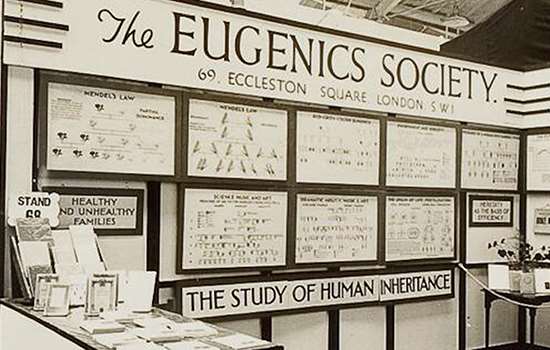SHAW, George Bernard (1856-1950)
Plaque erected in 1951 by Greater London Council at 29 Fitzroy Square, Fitzrovia, London, W1T 6LQ, London Borough of Camden
All images © English Heritage
Profession
Playwright
Category
Literature, Theatre and Film
Inscription
GEORGE BERNARD SHAW LIVED IN THIS HOUSE FROM 1887 TO 1898 "FROM THE COFFERS OF HIS GENIUSHE ENRICHED THE WORLD"
Material
Bronze
Notes
Plaque erected by St Pancras Borough Council in 1951, adopted by the GLC in 1975. Plaque to Virginia Woolf also at this address.
The playwright and polemicist George Bernard Shaw was among the most famous dramatists of his generation, perhaps best known today for Pygmalion (1913), from which came the musical and play My Fair Lady (1956, 1964). It was while he was living at 29 Fitzroy Square in Fitzrovia that he started to develop his acerbic and humorous style.
THE ‘UNPLEASANT’
Shaw lived in the upper two storeys of 29 Fitzroy Square – a building of the 1830s on the square’s west side – from March 1887 until June 1898, when he married Charlotte Payne-Townshend. During this time, he cut his teeth as a theatre critic and playwright. Among the works he wrote here was the collection Plays: Pleasant and Unpleasant (1898). In the ‘unpleasant’ category was Mrs Warren’s Profession (1893), which was banned by the censor (Mrs Warren ran a brothel). ‘My reputation as a dramatist grows with every play of mine that is not performed’, he quipped. A leading light of the Fabian Society, Shaw also wrote many polemical pieces, including The Sanity of Art (1895, 1908).
His future wife, Charlotte, was shocked to find that he worked at Fitzroy Square in ‘a very small room which was in a perpetual state of dirt and disorder’, surrounded by:
heaps of letters, pages of manuscripts, books, envelopes, writing paper, pens … butter, sugar, apples, knives, forks, spoons, sometimes a cup of cocoa or a half-finished plate of porridge, a saucepan and a dozen other things … and all undusted, as his papers must not be touched.
The ungainly furniture obliged anyone who entered the room ‘to move sideways like a crab’, and occasional clean-up operations ‘took two full days’ hard work’. After their marriage, the Shaws’ London home was at the Adelphi, but Shaw’s mother continued to live in Fitzroy Square until 1907.
FITZROY SQUARE
Fitzroy Square is the only London square to have been laid out by Robert Adam and features six plaques. Shaw’s bronze plaque was joined by a blue one on the same building to Virginia Woolf in 1974, forming a famous literary pairing.
Shaw’s plaque was erected by St Pancras Borough Council in 1951, just a year after his death, and incorporated into the official scheme in 1975. It gives no vital dates or profession, but features the quotation ‘From the coffers of his genius he enriched the world’ – taken from the note written by Shaw’s housekeeper, Mrs Laden, to announce his death.
Nearby Blue Plaques
More about blue plaques
-

Eugenics in Britain
Find out more about the controversial and changing ideas about eugenics, and some of the figures with blue plaques who supported or opposed it.
-

Support the blue plaques scheme
Every blue plaque, from its research to unveiling, is funded by donations. Find out how you can help support the scheme.
-

Search for a Plaque
Use our search function to look for someone from history, or browse by category or location.